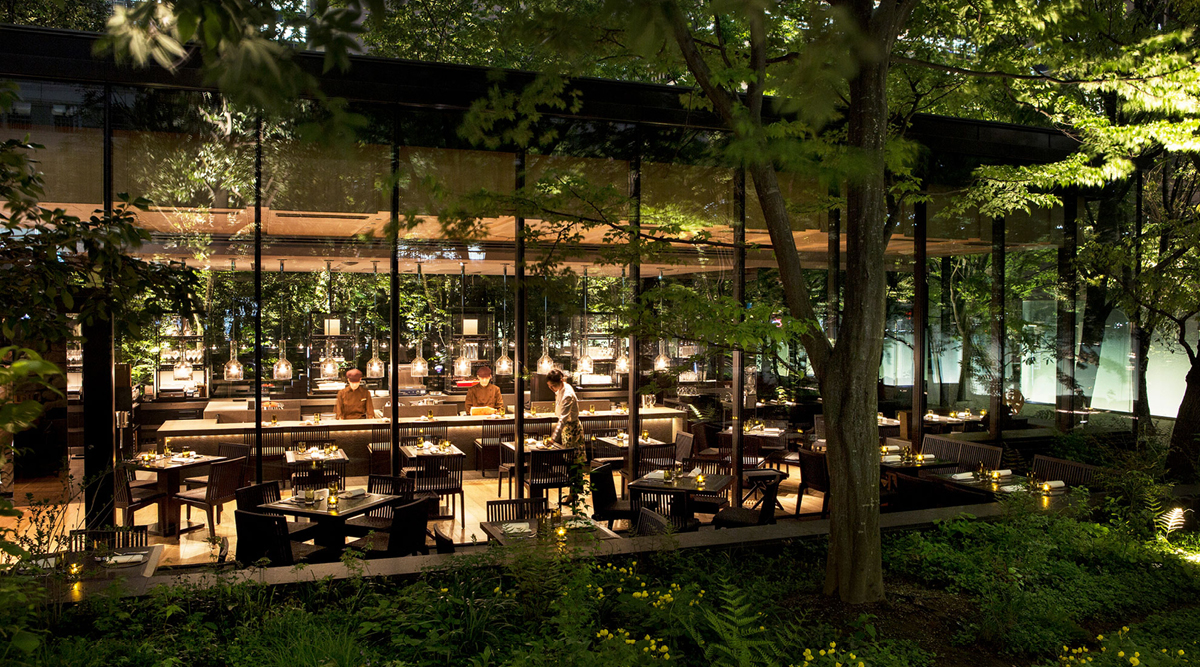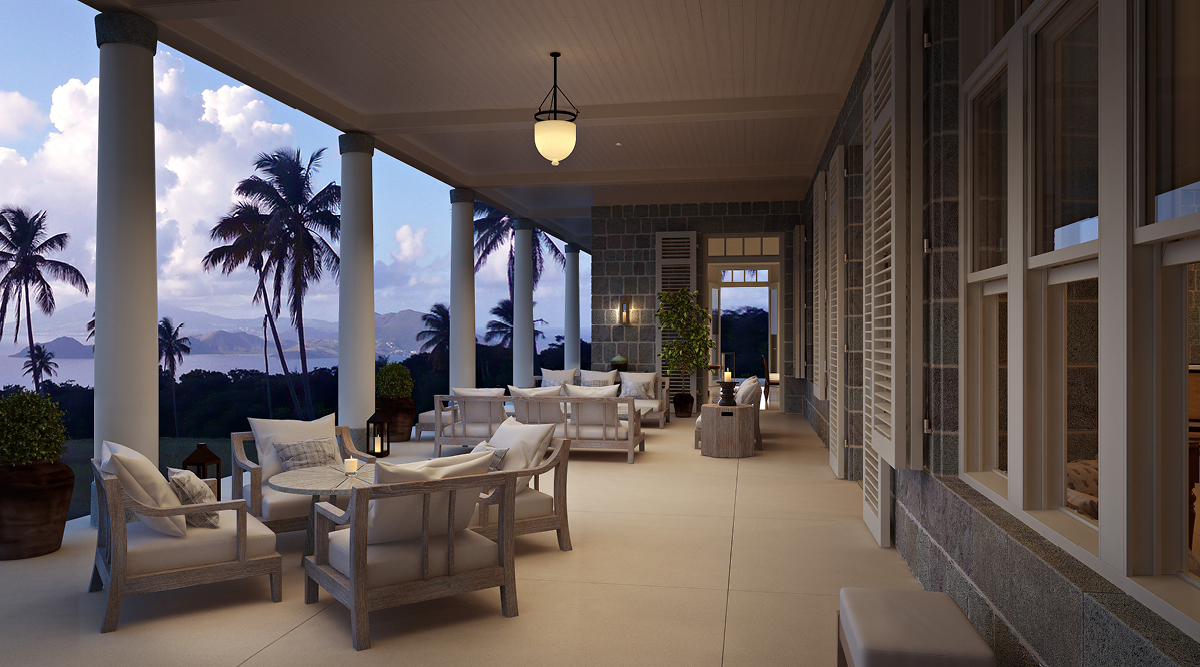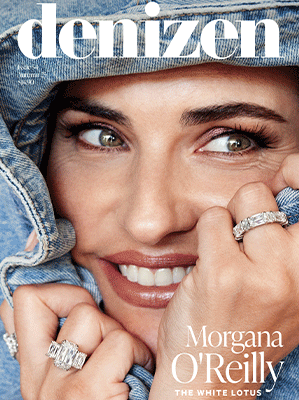Designing interior spaces for large-scale projects like luxury hotels is a fine art. It requires a meticulous eye and a practical mind, and demands that those who take on the challenge are as creative as they are adept at problem-solving — a rare combination. As such, the designers working in this space are masters of their craft, able to take sprawling plans on paper and mould them into private and shared spaces that will suit a high volume of guests, while still feeling comfortable, inviting and sumptuous. Like we said — a fine art.
So when we encountered the work of Yvette Adams, a New Zealand interior architect responsible for the design of some of the most exquisite, luxury hotels around the world (and happily flying under the radar in the process) we had to know more.

For more than 20 years, Yvette Adams has cultivated an international career that has seen her take on a raft of impressive projects. From designing interiors for world-renowned Aman resorts in Tokyo, Kyoto, Shanghai, Cambodia and Jordan as well as for the Sheraton in Calcutta and The Chedi in Chiang Mai, to conceiving luxury spas at the likes of Claridges in London and Dedica Hotels globally, to being hired by Anne Bass (one of the world’s wealthiest women, a prolific philanthropist and art collector with a passion for architecture and gardens — she sadly passed away in 2020) to design private homes and businesses in Sri Lanka, the United States and the Caribbean, Adams’ experience has been vast, and has enabled her to cultivate a uniquely international perspective. The spaces she creates are simple but sophisticated and perfectly-appointed, balancing clean, contemporary lines with luxurious finishes and careful, fastidious details. Some would call her work ‘essential,’ Adams herself calls it ‘restrained,’ but I hazard a guess that anyone who experiences it in person would call it ‘perfection’.
“The spaces she creates are simple but sophisticated and perfectly-appointed, balancing clean, contemporary lines with luxurious finishes and careful,fastidious details.”
It is a testament to Adams’ skill that she can breathe life into blueprints — masking complex spaces with simple, elegant façades — but a testament to her personally that she would rather let her work speak for itself. Having operated at such a high level for so many years, it is surprising that Adams isn’t a more widely-known designer in New Zealand, although I get the impression that keeping things quietly excellent is as much Adams’ personal brand as it is her professional one.

“I wouldn’t say that I have a style per se, because I don’t come at everything in the same way,” the designer tells me. “I also don’t feel the need to leave a distinct mark… I just like to get under the skin of something,” she continues, “to bring it to life in a way that feels authentic and inevitable… and in a way that doesn’t feel too ‘designed.’”
For Adams, balancing the analytical with the creative was something she learned when working as an architect early on in her career, but something she honed in her 14-year tenure at Kerry Hill Architects in Singapore (a role that saw her cut her teeth on major projects like the Aman Tokyo).I have to wonder how, exactly, one approaches a project of that budget and scale. How, I ask, armed with nothing more than an empty site, some one-dimensional plans and a rough concept, does Adams go about carving out such precise interior spaces? “I worked on that project [Aman Tokyo] for seven years,” she tells me, “we were involved very early on when the building was in its earliest phase and were able to help determine the building’s structure to suit its purpose. The footprint of the guest room was established at the beginning rather than being squeezed into a predetermined space. That is what I enjoy, the push and pull process between architecture and interiors.”

The result is spectacular. Offering a calm, sanctuary-like escape in the heart of Tokyo’s bustling metropolis, Aman Tokyo comprises 84 luxury suites across the top six floors of the Otemachi Tower overlooking the Imperial Palace. Aesthetically, its sense of place is clear, with a strong Japanese influence woven through a minimalistic material palette and purposeful, pared-back spaces filled with everything a guest might need (and nothing more).
According to Adams, success in working with hotels always comes back to the plans. “I refer to the plans constantly,” Adams tells me, “I get a bit obsessed with them, they’re like a puzzle to me.” From there, she explains, she likes to imagine how a space will work according to the behaviour of those who occupy it, a process that strikes me as inherently anthropological — as much a study of people as it is of dimension and form. “I think about how people would mingle and separate themselves within a space,” Adams explains, “where they might want privacy or, on the other hand, where they might want to socialise… and how to make them feel as comfortable as possible in those pursuits.”
Comfort, Adams says, is always front of mind. “I never want anyone to walk into a lobby and not feel happy. There is nothing worse, after a long journey, to have to stand in a line of people to check in. The combination of design and hotel operations is crucial,” she continues, “there is also nothing worse than an uncomfortable chair… what’s the point?” As such, in many of the hotels she designs, Adams will create bespoke furniture to fit the requirements of the spaces as well as engaging local artisans to create details that anchor the design in its location. It’s a similar story in residential projects (all of the furniture in the sprawling private home she is still currently finishing in the Caribbean is bespoke), although she will also often consider pieces from brands that are comfortable and timeless (think the likes of Flexform or Vincent Van Duysen for Molteni&C). “I think we’re moving away from the uber-designed Italian vibe,” Adams tells me, “and there are just so many beautiful options out there at the moment.” She continues, “I love everything from Cassina… in fact I have the Cab chairs in my own home, I just don’t see how you could have a better chair.”

Adams’ ability to operate on both a macro and micro level, is what I find most fascinating about the way she works. That her scope of consideration goes from designing individual chairs to the look and feel of huge shared spaces, offers insight into her uniquely creative mind. Although for her, it’s all part of the process. “On the one hand you really have to have that big vision befitting of a multi-million dollar project,” Adams explains, “but you also have to be able to pull it right back to the idea of a ‘bricks-and-mortar’ space, the bare bones, the basics… and then continuously think about both sides of that coin at once.” She continues, “a hotel is a bit like a house, there still needs to be that underlying theme and strong narrative to tie everything together, it’s just on a different scale.”
“For Adams, balancing the analytical with the creative was something she learned when working as an architect early on in her career, but something she honed in her 14-year tenure at Kerry Hill Architects in Singapore.”
Really, the scale is eye-watering. Not only in square-footage or in the millions of dollars being directed into the build, but in the time taken to go from concept to completion — with most hotel projects requiring years of full-time dedication. “They are very all-encompassing,” the designer admits, “and block out huge chunks of my schedule at a time.” And there are inevitable challenges, of course. One of Adams’ more recent projects was a new hotel in Tokyo, which she worked on for two years. Taking cues from the hotel’s proposed facade (designed by Kengo Kuma and taking the form of a twisting tree) Adams dreamt up a spectacular interior that married contemporary lines and a restrained palette with elements of the natural world, and brought traditional Japanese touches from the Meji period into contact with subtle, Victorian-era nods. But despite the work already done, The Tokyo Hotel was eventually put on hold, and still has no opening date in sight. “It can be challenging,” Adams says, “and sometimes you put in an extraordinary amount of time and then the process comes to a halt, but I think I would rather have a few big projects than 20 small ones.”

At the moment, it is still only a small team that makes up Adams’ eponymous studio, with the designer still heavily involved in all of her projects. In fact, Adams tells me that she actually enjoys being more hands-on, explaining how her understanding of every aspect of a project is crucial to determining its outcome. “I love the process of evolution in a project,” she says “and chipping away at things to create beautiful spaces.” (Although, she also emphasises that it is never just a one-woman show.) “There are architects and creatives that I collaborate with all over the world,” she explains, “from New York to Asia to Europe… and right now, although my home is in New Zealand, I have a number of clients and partners overseas who just really trust me and trust my vision.” She also travels — a lot.
In fact, she recently returned from a trip to the Saudi Arabian desert where she has been called on as the design lead for an exciting new hotel — the details of which are strictly under wraps. On the same trip, she also managed to stop in the Caribbean to check on the progress of the exquisite, private residence she designed in Nevis — a truly spectacular property.

As for the future, Adams divulges that she has recently sent off proposals for projects in Seattle, Colorado and China, and has been involved in early discussions around something happening in Tanzania. For a designer based in New Zealand, maintaining such an international roster of work must certainly take its toll. “I am open to my team growing a bit but it has to be for the right reasons,” Adams tells me. “And I’d definitely like to do a few more projects at home but they have to be the right ones.”
From my perspective, Adams’ experience is such that she is in a position to pick and choose the projects that most interest her. But for her, it has always come down to whether she fits a particular job. Getting her brand out there in any conventional sense has certainly never been a driving force for this designer, who would rather her work (and not her name) be the determining factor for winning a brief.
For now, Adams tells me that she is happy being back in New Zealand after years living as an expat in Asia. “This is my place now,” she says, and while home is certainly where the heart is, we have no doubt that Adams’ work will continue to impress those far beyond our borders.







